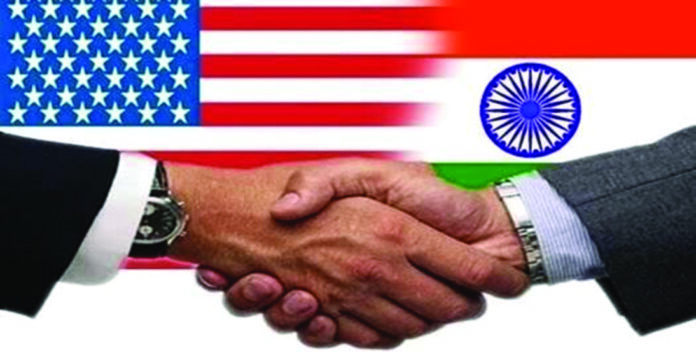Strategically, the US-India Alliance is a unique bilateral relationship between two of the largest democracies in the world that seeks to meet two major global needs. With India as a rising economic and military power, the US has steadily acknowledged India’s importance as an essential actor in preserving peace in the Indo-Pacific region, checking the rise of China, and developing the international order. Defining the objectives of the G20, through the promotion of a number of fields such as defense, trade, informational and climate technology, and combating non-traditional threats and insecurities, the alliance aims at creating a synergy of the largest democracies of the world to deepen and strengthen the rules-based international order, besides ensuring global economic prosperity and stability. This strategic bilateral relation has become more vivid in recent years, with major initiatives like the Quad Security Dialogue, the US-India Strategic Partnership Forum, and DTTI underscoring the vision of the US and India for a safe and prosperous world.
China’s emergence has important consequences for international relations; the United States and India are potential partners in sustaining a reasonable global system. These bilateral relations implemented in defense cooperation, economic relations, as well as diplomatic relations are aimed at checking the growth of China and ensuring peace and security. The relations between the US and India have always seen both a phase of cooperation and a phase of tension. But in recent years, the two powers have impeached on these issues due to growing apprehensions over China’s growing influence. Indeed, the rise of India-US strategic cooperation in the Indo-Pacific region is because the US has realized the centrality of India in this region, and India has reciprocated positively. Security is a major reason for the cooperation between the US and India.
The US has classified India under the ‘Big buddies’ list in defense, which allows effective trade of defense and technology. Two nations have also signed the so-called Defense Technology and Trade Initiative, DTTI, to promote the co-production and co-development of defense technologies. US defense has stepped up its strategic approach in the Indo-Pacific, particularly concerning Asia-Pacific States. An important change has recently taken place at the Pentagon: the PACOM has been redesigned into the INDOCACOM. India has not threatened US military presence in its region because it knows that stronger security cooperation is good. In addition to the cooperation in defense, the relations of trade between the US and India are deepening. The US is India’s major trading partner, with the bilateral trade crossing $150 billion.
The two nations are trying to give new dimensions to trade relations and investment cooperation through different forums, including the US-India Trade Policy Forum and US-India Commercial Dialogue. India now has one of the fastest-growing economies, a very large and expanding consumer market that would interest any investor from the US. Ig companies like Google, Amazon, and Facebook have started investing in India, and many more will also follow the same. The US-India partnership is also aimed at enhancing cooperation in connection with regional integration and infrastructure. Currently, the US has begun implementing the ‘Asia EDGE’, which stands for Enhancing Development and Growth through Energy in Asia-Pacific.
Currently, India practices the Act East policy, which focuses on increasing cooperation with Southeast Asia, which upholds the objective of the US. Both countries are trying to advance connections and infrastructure within the Indo-Pacific as the groups of Asia realize the increasing role of integration in stability. People have questioned the reliability of BRI as well as the indebtedness and strategic encroachment of China. The US and India have responded by introducing different models of infrastructure development that are free from corruption, environmentally unfriendly, and politically non-sensitive.
The co-relational partnership between the United States’ and India is vital to global issues like climate change. India ranks high amongst the countries responsible for emissions of greenhouse gases; the US has been partnering with New Delhi to support clean tech and cut emissions. PACE is the USAID’s largest initiative, with a goal of encouraging the advancement and commercialization of clean energies. This has already born fruit, the joint fruit of which is the US-India Clean Energy Finance Initiative. The US-India strategic partnership has evolved and deepened threefold since 2000 but has not been devoid of problems. This paper provides an overview of trade protectionism and defense cooperation as ongoing and essential topics. However, the US has been trying hard to tackle these issues, including through measures like the US-India Defense Cooperation Agreement.
Finally, the US-India partnership is best understood as a security-based counter reaction to China’s. This concern is defined both by the desire to stabilize such a vast and rapidly developing region and enhance international cooperation based on objective principles. Leveraging defense support, economic relations, and diplomatic relationships boosts peace and security in the Asia-Pacific region.
Therefore, the bilateral US-India relationship will always be relevant and important in checking China’s exploitation of power throughout the progressing years. India has increased its economic and defense power significantly and is destined to become one of the world’s most important players, and the US wants it to do so.
Democratic values and strategic partnership between the US and India bring in the virtues of peace and balance. The new strategic partnership between the US and India that was established in order to buffer against China’s rising dominance has several problems that threaten its success. The US-India partnership: The anti-China alliance an emerging strategic partnership soared high by coupling the fears of China’s resurgence and possible Note that the US has recently concluded strategic partnerships with other countries as well, like Japan and Australia, for the same purpose. Looking at the specific focuses as under: Economic liberalization: There have been issues of trade protectionism where one party, the US, has placed a tariff on imported Indian goods and the other party, India, has responded in the same manner. Updated relationship between India and Russia, their firm relationship along with India purchasing Russian S-400 missile systems have also made it problematic with the US. Besides, China has increased its military capabilities and recently become more aggressive in the South China Sea area—mostly as far as concerns freedom of navigation and sovereignty over some territories.
Further differences are based on various approaches to such aspects as emerging technologies, cyber security, or data localization. New Delhi has been seen as taking a lukewarm approach to outright confrontation with China because of the two nations’ difficult and multifaceted relationship. The domestic politics in both countries, with the US experiencing a much deeper polarization and India developing stronger nationalist politics, have brought some unpredictability in the relationship. Only if these challenges are met can the current dynamics of the alliance be preserved and the effectiveness of actions against China’s dominance be maximized. Cooperation in technology will add up to have vital importance where partnerships will be witnessed in artificial intelligence, cyber security, and 5G. This will be the Quad Security Dialogue embracing Japan and Australia to advance aspirations on the security, economic, development, and infrastructure fronts.
“The future of the US-India relationship remains extremely bright as an optimal strategic counter-terrorism strategy for China. This partnership between the two largest and oldest democratic countries of the world would be an important factor in a continuing stable relationship in the Indo-Pacific region. In the years to come, the defense partnership will be put into more depth, mainly based on the research and development as well as manufacturing of modern defense assets. The newly formed US-India Strategic Partnership Forum will focus on the energy infrastructure and ICT sectors to help support India’s expanding economy”.
Mapping the growth of China as a superpower, the increasingly strong alliance with India will act against its strategic agenda in matters of naval security, terrorism, and weapons proliferation. Donors would benefit from India’s economic and military growth because it will increase work and responsibility partnerships. In order to capture all these benefits, the strategic relationship should focus on communication, trust, and formal collaboration.






















